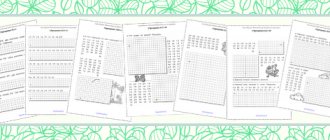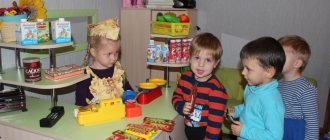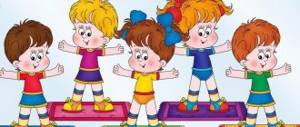Game technologies in environmental education of preschool children
Bibliographic description:
Kustova, E. A. Game technologies in the environmental education of preschool children / E. A. Kustova. — Text: direct // Questions of preschool pedagogy. — 2020. — No. 3 (6). - pp. 93-96. — URL: https://moluch.ru/th/1/archive/41/1284/ (access date: 10.10.2020).
The article discusses the issues of environmental education of modern preschool children using gaming technologies. Much attention is paid to game-based learning situations.
Key words: gaming technologies, environmental education, game-based learning situations
It is no secret that today one of the strategically important issues in education is the environmental education of the younger generation. Since preschool education is the first stage in the educational system, it is especially important during this age period to pay attention to the environmental component. Emotionality, special sensitivity, openness and great interest in the natural world in a preschool child are fundamental factors for the beginning of successful environmental education in preschool educational institutions.
Currently, there are a large number of partial programs, the purpose of which is the directed environmental education of preschool children. Their main goal is the transfer of environmental knowledge, the formation in students of the ability to understand and love nature, and treat it with care.
– the programs “Young Ecologist” (S. N. Nikolaeva), “Our Home is Nature” (N. A. Ryzhova) are based on an activity approach;
– the programs “Life around us” (N. A. Avdeeva and G. B. Stepanova), “We are earthlings” (N. N. Veresov) are aimed at developing environmental consciousness, knowledge of the relationship between man and nature, and a value attitude towards the natural world ;
– programs “The Planet is Our Home” (I. G. Belavina, N. G. Naydenskaya), “Seven Flowers” (V. I. Ashikov, S. G. Ashikova), “The World Around Us” (T. I. Popova ), which are aimed at forming the foundations of the cultural and ecological consciousness of children through the use of works of fine art, music, and literature.
These programs are aimed at the active and systematic use of the educational environment of preschool educational institutions in nurturing the environmental culture of children.
In environmental education, didactic games help children clarify, consolidate, expand, and systematize their existing knowledge about nature, and also enable children to operate with the objects of nature (seeds, fruits, vegetables, fruits), compare them, and note changes in individual external signs.
Currently, great importance is attached to didactic games in the environmental education of preschool children. There is its obvious effective impact on the intellect, on the formation of the ecological culture of a growing child, which is confirmed by the experience of many years of practice working with children not only in the work of famous teachers, but also in the work of teachers in general [2].
Didactic games can be played with children both collectively and individually, making them more complex taking into account the age of the children. Complication should come through the expansion of ideas and the development of mental operations and actions. Didactic games are carried out during leisure hours, during classes and walks [1].
Ecological game promotes:
– convey complex natural phenomena in a more accessible form;
– enriching the child’s sensory experience;
– a more sensitive attitude towards nature, while developing his mental abilities;
– obtaining new knowledge, generalizing and consolidating it;
– development of cognitive abilities;
– clarification, consolidation, expansion of their ideas about objects and natural phenomena, plants, animals.
In environmental education, you can also use elements of role-playing games to teach preschoolers and develop in them a consciously correct attitude towards plants, animals and people as part of nature, as well as materials of natural origin and objects made from them. I. A. Komarova and S. N. Nikolaeva developed various game-based learning situations (GTS) - special forms of plot-role-playing games, rich in environmental content [3]. They are specially created by the teacher to solve a specific problem during environmental classes and excursions. Toys that depict animals, literary and fairy-tale characters, heroes of children's television shows and cartoons are a kind of playful elements in learning. In contrast to individual gaming techniques and didactic games, the gaming learning situation is closely related to the course of the environmental lesson. Thanks to it, the main educational tasks are solved, children’s activity in the learning process increases, fatigue decreases, interest in cognitive activity is formed, and emotional responsiveness develops. Playful learning helps a child feel his or her own capabilities and gain self-confidence.
You can use three types of game learning situations, the use of which has different didactic possibilities: IOS with analogue toys, IOS with literary characters, IOS travel. The first type of IOS is based on the use of analogue toys, that is, toys that depict animals and plants. There is a huge variety of animal toys (soft, rubber, etc.) and a very limited number of plant toys (plastic Christmas trees, vegetables, wooden mushrooms, trees, artificial flowers). The main point of using this kind of toys is to compare a living object with a non-living analogue. In this case, the toy helps to distinguish between ideas of a fairy-tale-toy and realistic nature, helps to understand the specifics of living things, and develop the skills to act correctly and differently with a living object and subject. The latter characteristic makes it possible to use toys as handout material (children can pick up a toy fish but cannot pick up a live one that swims in an aquarium), which is especially important for younger preschoolers.
The construction of play-based learning situations with analogue toys comes down to comparing a living object with its toy image in appearance and mode of functioning (behavior). A toy cannot replace an animal or plant, but it is equally a meaningful element of learning. Various game situations in the classroom showed that an analogue toy can be used for didactic purposes to form realistic ideas about animals in children of different preschool ages. Special attention should be paid to the parallel use of a toy and a living object: a toy does not replace anyone, it, like an animal (or plant), focuses the child’s attention on itself, is equally a meaningful element of learning, which creates favorable conditions for finding differences between a toy and a living object. object. At the same time, the way of including it in the lesson is important, when the toy is contrasted either with a living animal or with its realistic depiction in a painting.
The use of a toy in the learning process must be in full accordance with its functional purpose: the toy helps to reproduce play actions and role relationships. It should also be noted that the use of analogue toys may not be equally successful in all cases. The presence of a toy is appropriate whenever the conversation in class is based on specific knowledge acquired earlier (during the process of observation). This is especially necessary when effective contact and direct communication with the animal is impossible. Preschoolers are happy to hold toy fish, birds, and bunnies in their hands, since the possibility of picking up live animals is excluded. And vice versa, children do not pay attention to a toy puppy if there is a live dog next to them that they can stroke, hold by the paw, that walks, sniffs, and barks. The widespread use of analog toys for didactic purposes of introducing children to nature puts forward certain requirements for their quality, which is determined by the following points. The toy must be recognizable: its shape should not raise doubts about belonging to a particular species of animal or plant. A toy, regardless of the material from which it is made, must be “kind” and cute, attract the attention of children and adults, and evoke positive emotions. The toy must be aesthetic - its coloring can be decorative, but always highly artistic.
The second group of play-based learning situations consists of ITS using dolls, which are characters from literary works that are well known to children. In preschool institutions, educators often use dolls such as Pinocchio, Dunno, Parsley, etc. to attract children's attention to the didactic goal of the lesson. However, their role in learning is, as a rule, small: they mainly perform an entertainment function, and in some cases even interfere with the lesson. Meanwhile, children perceive the heroes of their favorite fairy tales, short stories and filmstrips very emotionally and try to imitate them. This is noted by many researchers who study the influence of literary works on the behavior of preschool children (T. A. Markova, D. V. Mendzheritskaya, L. P. Bochkareva, O. K. Zinchenko, A. M. Vinogradova, etc.). Dolls that are characters from fairy tales, based on their “literary biography,” can be successfully used in environmental classes. For this purpose, the images of Chipolino, Dunno, Carlson, Aibolit, Little Red Riding Hood and other fairy tale heroes are used. With the help of these characters, well known to children, it is possible to intensify the cognitive activity of preschoolers and solve a number of didactic problems of the program content. Dolls from fairy tales are not just cute toys that entertain children, but characters with their own character and mood, with their own manner of behavior stemming from the plot of the fairy tale. They are interesting to preschoolers because in new, unexpected situations the typical character traits of these heroes appear. For example, Carlson and Dunno very often don’t know something and therefore find themselves in a difficult situation - and then the guys’ knowledge and help are needed. Such moments are good because preschoolers begin to teach them - they explain, tell them what they already know, that is, from being taught, children turn into teachers, thanks to which their mental activity is activated. During classes, the teacher asks the children questions, explains something, and tells them. But when he asks “stupid” questions on behalf of Dunno or Carlson, the children are happy to correct his “mistakes.” They are at the mercy of the game situation, so they confidently complement the teacher’s story, clarifying and consolidating the acquired knowledge.
The third group of game-based learning situations is a travel game (“Trip to an exhibition”, “Expedition to Africa”, “Excursion to a zoo”, “Journey to the sea”, etc.), during which children learn a lot of new things. In each case, the plot of the game should be thought out in such a way that preschoolers, as travelers, sightseers, and tourists, “visit” many places. The teacher takes on the role of a tour guide, leader of a tourist group or an experienced traveler and - this is the main thing in this type of IOS - as part of role-playing behavior, he tells the children new interesting information, introduces them to new natural phenomena and objects. In such game-based learning situations, homemade cameras, telescopes and binoculars (“optical instruments”), which create good visual conditions for observation, can be of great help to the teacher. Photographing involves making “photographs” (children make drawings based on their impressions). All IOS require certain training from the teacher. He must think over the plot, create an imaginary situation for role-playing interaction between children, and prepare paraphernalia. It is very important that the teacher himself easily enters the game - in some cases he plays two roles at the same time: he conducts a dialogue on behalf of the character doll and at the same time remains the teacher who conducts the lesson with the children. Training using game-based learning situations in some cases may go beyond the allotted time, but this is not dangerous, since a good game, creating an emotional mood in children, provides the maximum developmental effect.
The advantages of game-based learning compared to traditional viewing of slides or looking at pictures are obvious. Preschoolers practically master play action and actively participate in creating an imaginary situation. Game-based learning situations help children gain new knowledge, give them a practical model of correct behavior in nature, in the halls of a museum, which is of great importance for environmental education. The alternation of such games and real walks through the forest forms in preschoolers a consciously correct attitude towards nature and all living things. “For a child at this stage of mental development,” notes A. N. Leontyev, “abstract theoretical activity, abstract contemplative knowledge does not yet exist, therefore awareness appears in him primarily in the form of action. A child who masters the world around him is a child who strives to act in this world.” Further experimental searches will help to find new aspects and possibilities for using gaming and learning situations in classes on environmental education of preschool children
Literature:
- Bulatova T. Yu. Application of information and communication technologies used in students’ project activities // Science and prospects. — 2020. — No. 1 [Electronic resource]. URL:nip.esrae.ru/6–18 (date of access: 06/26/2016).
- Grinko M.N., Mikheeva E.V., Samsonenko L.S., Shavshaeva L.Yu. Readiness of preschool teachers to form an ecological culture of preschoolers // Modern problems of science and education. - 2020. - No. 3. [Electronic resource] URL: https://www.science-education.ru/ru/article/view?id=19964 (access date: 06/26/2016).
- Nikolaeva S. N., Komarova I. A. Story games in the environmental education of preschool children. Game-based learning situations with toys of various types and literary characters: A manual for teachers of preschool institutions. - M.: Publishing house GNOM and D, 2005.
Key terms
(automatically generated)
: child, preschool age, environmental education, toy, situation, animal, activity, nature, preschool education, play learning.
Forms and methods of working with children
Environmental problems have been the main problems of the world's population in the last few years, and they affect everyone without exception: both the ordinary citizen and high-ranking official.
Active technogenic activity and negligent attitude towards nature, constant accidents, have created an environment that is dangerous to life. Children suffer the most in changing environmental conditions. Their fragile body is sensitive to air and water pollution and poor quality products. The current environmental situation largely depends on insufficient environmental education. It is ignorance in the field of ecology that has given rise to a consumerist attitude towards nature.
Therefore, an important task today is to educate environmentally educated citizens. And we need to start educating children in the field of ecology from preschool age.
The main task of teachers in this case is to form a conscious attitude towards the natural environment, towards people involved in nature conservation and towards people who create spiritual values based on natural resources. In addition, environmental education forms awareness of oneself as a part of living nature, understanding of the significance of life and its dependence on the environment.
Finished works on a similar topic
- Coursework Ecology for preschoolers 470 rub.
- Essay Ecology for preschoolers 280 rub.
- Test paper Ecology for preschoolers 200 rub.
Get completed work or advice from a specialist on your educational project Find out the cost
Working with preschool children involves many nuances. The main goal of pedagogical work with children is the formation of an integral, socially responsible personality. In order for the goal to be achieved, it is important to solve the following tasks:
- To develop a desire to understand the natural world.
- Direct the child’s activity towards conscious protection of natural resources.
- To educate a child in environmental thinking and a humane attitude towards the world.
- Give children the necessary basic knowledge of ecology.
The methodology for educating preschool children’s ecological culture includes organizing a mass of events, among which are:
- minutes of ecology;
- excursions;
- environmental tales;
- environmental actions;
- experiments and experiments;
- educational didactic games.







